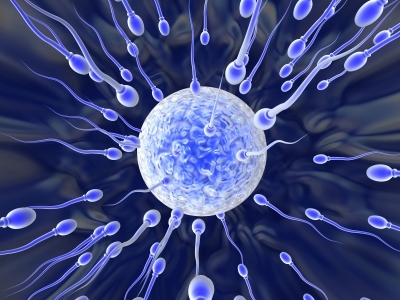Todd Akin & Pregnancy: Yes, It Can Happen to Rape Victims

When a viable sperm penetrates a viable egg inside a woman's reproductive tract, the result is a fertilized egg that can then implant in the uterus. That fact of life is consistent regardless of how that sperm and egg met up, including whether or not the sperm was ejaculated during rape.
That may be news to Rep. Todd Akin from Missouri who told a local television station, in explaining his stance that abortion should not be allowed even in the case of rape: "If it's a legitimate rape, the female body has ways to try to shut that whole thing down."
"Physiologically, if the sperm is in the vagina, a pregnancy can occur, regardless of the circumstances of how that sperm got there," said Dr. Melisa Holmes, an ob-gyn and founder of Girlology, an organization that promotes healthy sexuality and communication in families.
And though the anti-abortion Republican says he "misspoke," Holmes says that Akin's remark also suggests that some rapes are not "legitimate," and this continues a harmful misconception about violence against women.
"A rape is a rape, and a woman has the same physical and emotional consequences whether she's raped by a stranger in a dark alley or someone she's known for five years," Holmes told LiveScience. "That's one of those misperceptions that gets perpetuated and unfortunately affects women in a bad way — 'Were you really raped, or were you at fault for part of it?'"
Perhaps Akin is correct in thinking it's not the easiest of tasks to get pregnant; that's why men don't ejaculate just one sperm and instead release nearly 100 million sperm. (Men who have fewer than 20 million sperm per milliliter of semen may have difficulty conceiving, according to a WebMD article.) That's because few sperm survive the grueling journey from the vagina to the fallopian tubes where they can meet up with an egg. Even for those that make it, only the healthiest will penetrate, and fertilize, the egg. [11 Odd Facts About the Pregnant Body]
Still, of the 6.7 million pregnancies in the United States every year, about half are unintended, according to the Guttmacher Institute.
Sign up for the Live Science daily newsletter now
Get the world’s most fascinating discoveries delivered straight to your inbox.
The chance of getting pregnant from one event of unprotected sexual intercourse is 5 percent on average, according to the Rape, Abuse & Incest National Network (RAINN).
And according to research by Holmes and her colleagues published in 1996 in the American Journal of Obstetrics & Gynecology, that same rate applies to rape victims, though it's tricky to compare these different populations.
"Rape-related pregnancy occurs with significant frequency," the study researchers wrote in their journal article. "It is a cause of many unwanted pregnancies, and is closely linked with family and domestic violence."
In the study, Holmes and her colleagues, followed more than 4,000 American adults over a three-year period. Nationally, they found rape-related pregnancy rate was 5 percent among women of reproductive age, 12 to 45, meaning about 32,000 pregnancies result from rape each year, they concluded. Among 34 cases of rape-related pregnancy that they looked at closely, 32 percent of women maintained the pregnancy and kept the infant, 50 percent underwent an abortion, nearly 6 percent placed the baby up for adoption and nearly 12 percent had a miscarriage.
At the end of the day, Holmes said of Akin's comments, "It's just simple lack of education into the human body," adding that "the reproductive system is going to respond in the same way whether it's rape, or you're madly in love with someone. It's tubes and pipes and sperm and eggs, and there's nothing that will stop that process."
Follow LiveScience on Twitter @livescience. We're also on Facebook & Google+.
Jeanna Bryner is managing editor of Scientific American. Previously she was editor in chief of Live Science and, prior to that, an editor at Scholastic's Science World magazine. Bryner has an English degree from Salisbury University, a master's degree in biogeochemistry and environmental sciences from the University of Maryland and a graduate science journalism degree from New York University. She has worked as a biologist in Florida, where she monitored wetlands and did field surveys for endangered species, including the gorgeous Florida Scrub Jay. She also received an ocean sciences journalism fellowship from the Woods Hole Oceanographic Institution. She is a firm believer that science is for everyone and that just about everything can be viewed through the lens of science.
Man gets sperm-making stem cell transplant in first-of-its-kind procedure
'Love hormone' oxytocin can pause pregnancy, animal study finds









